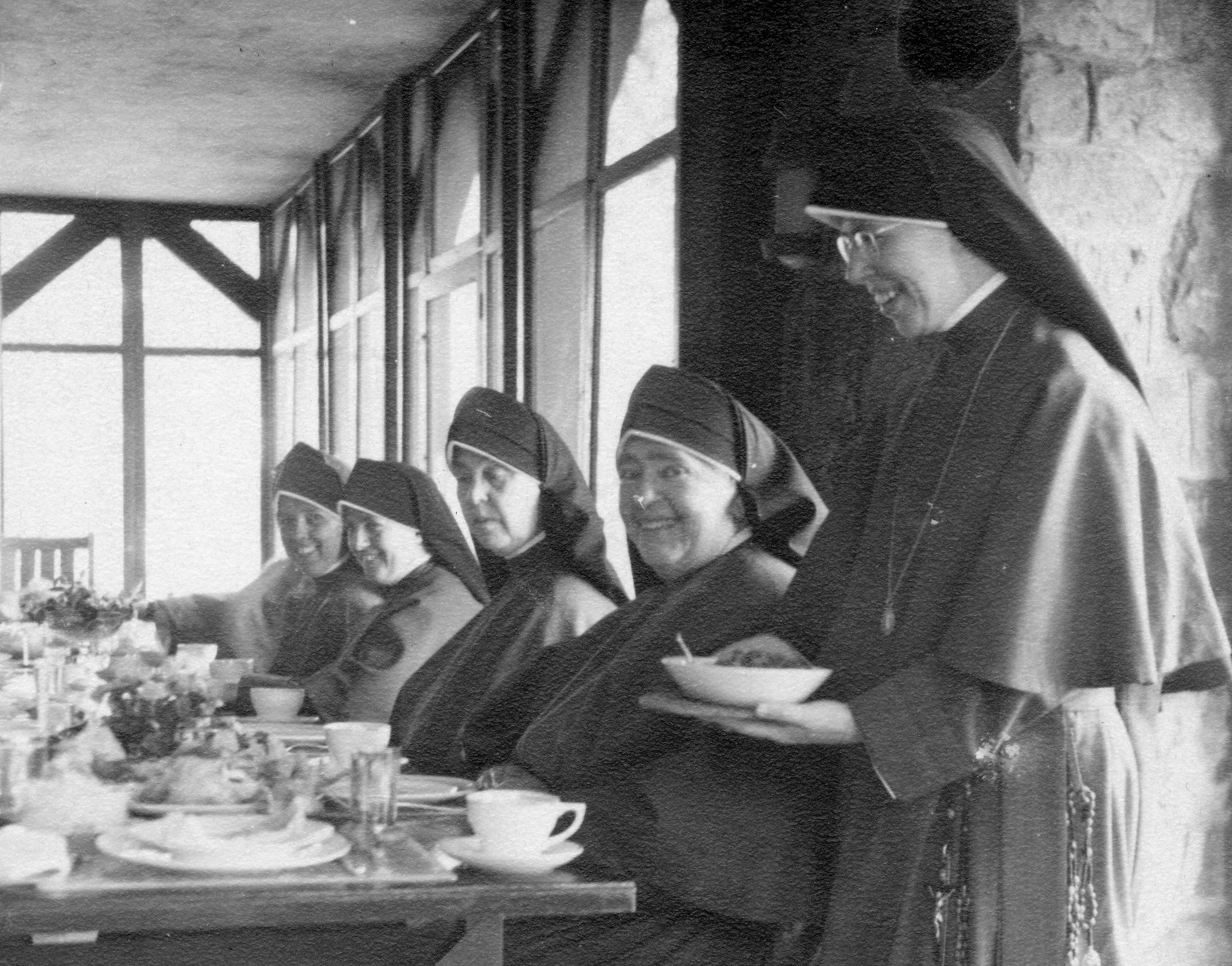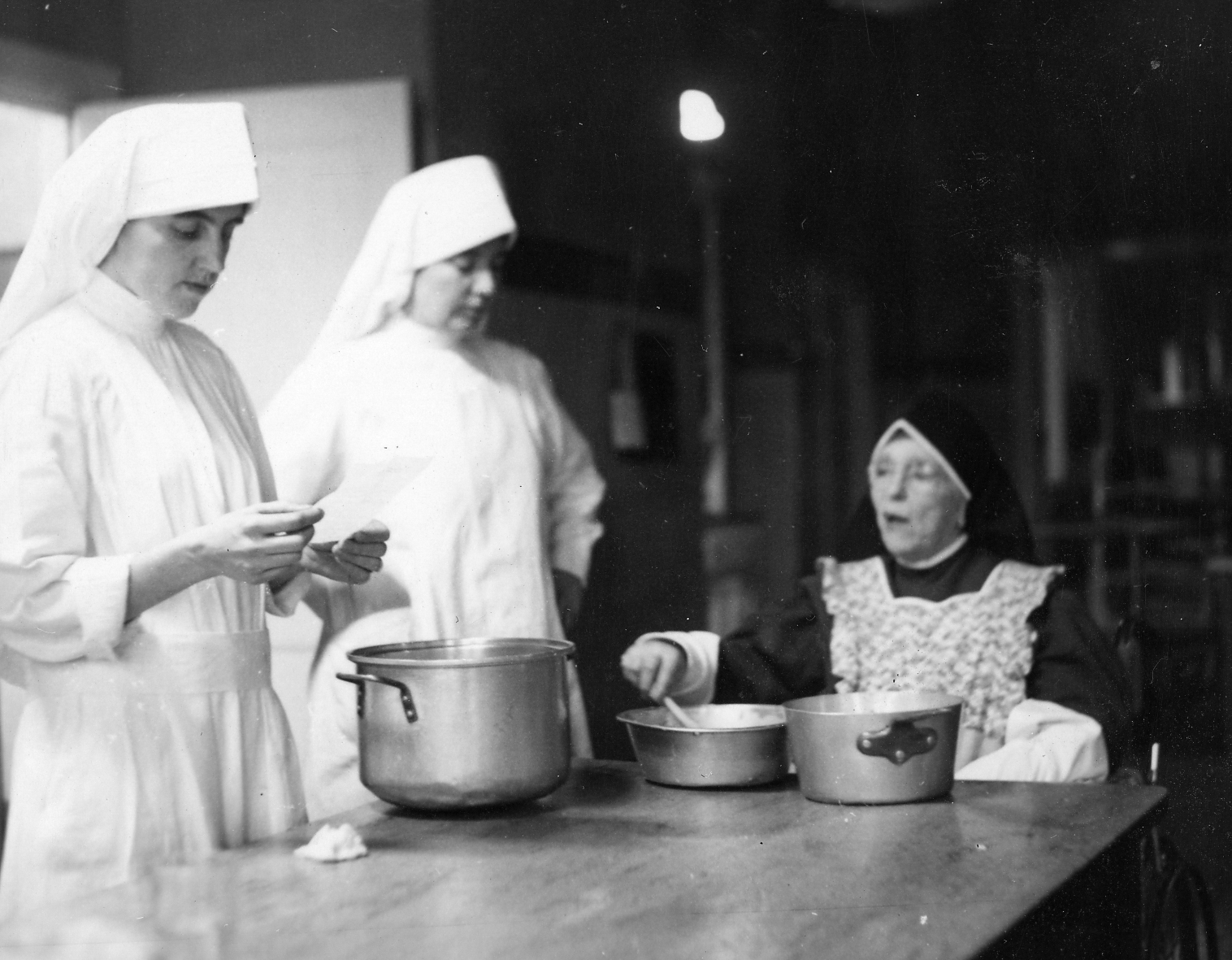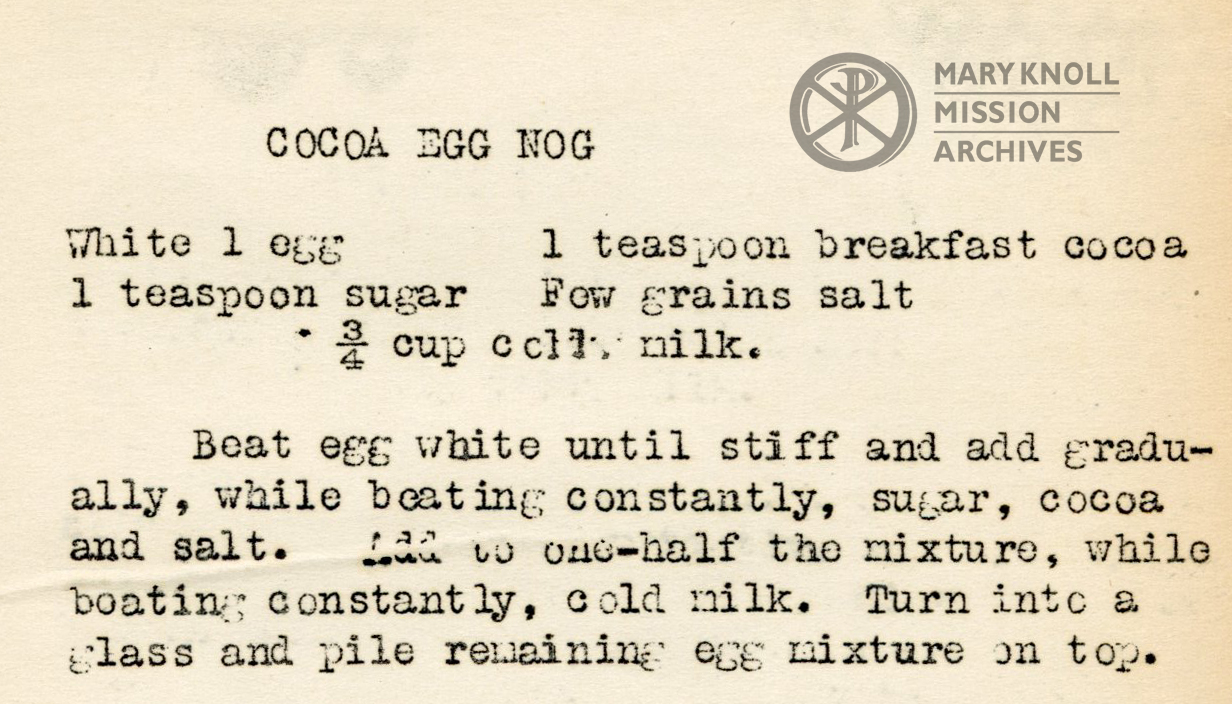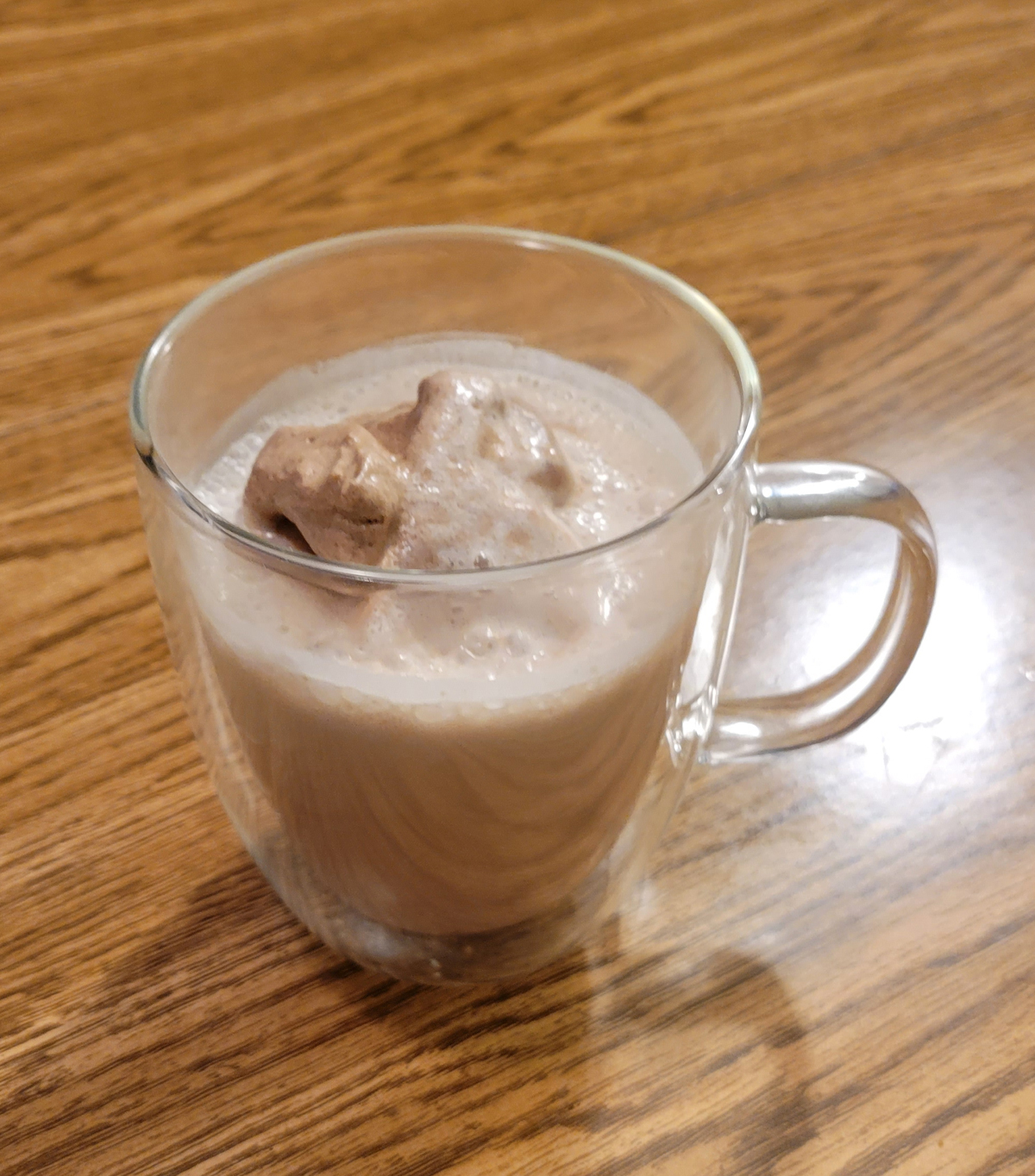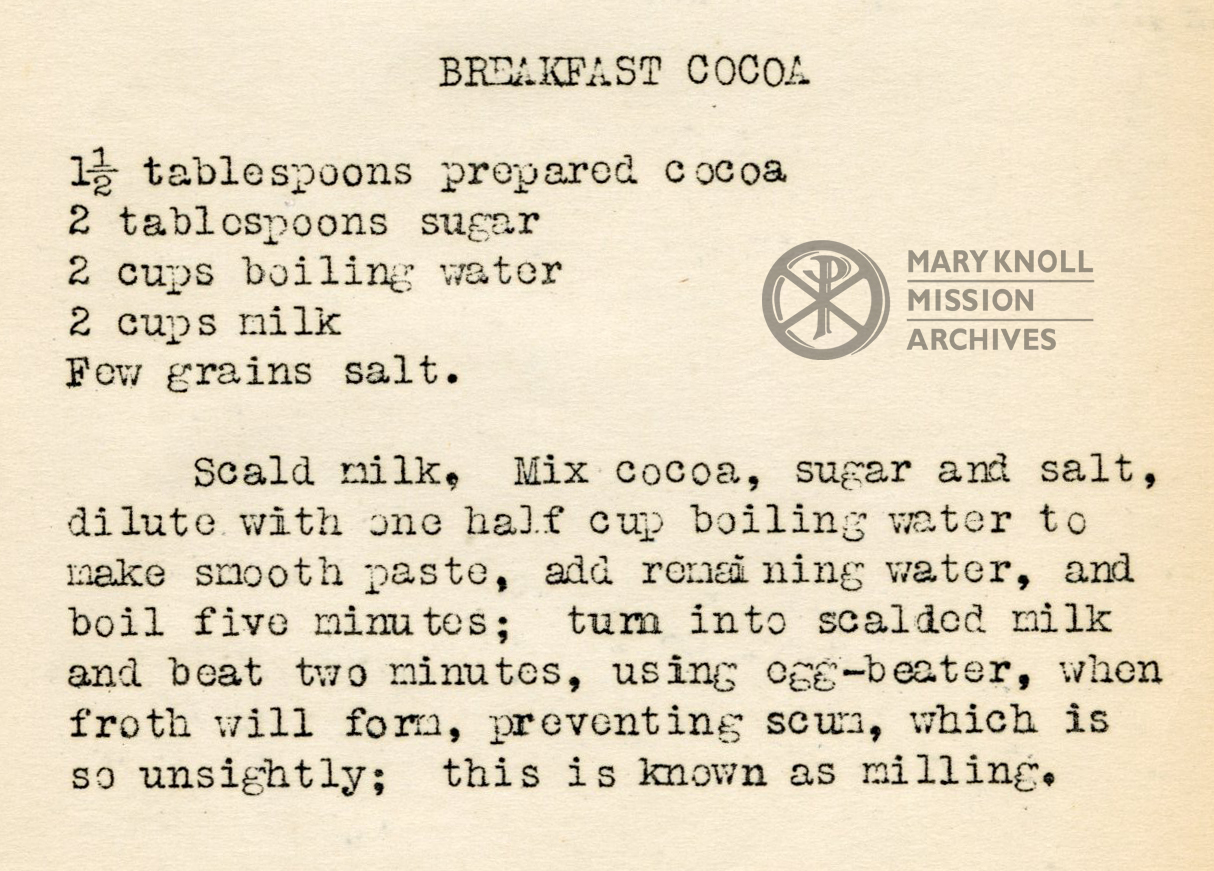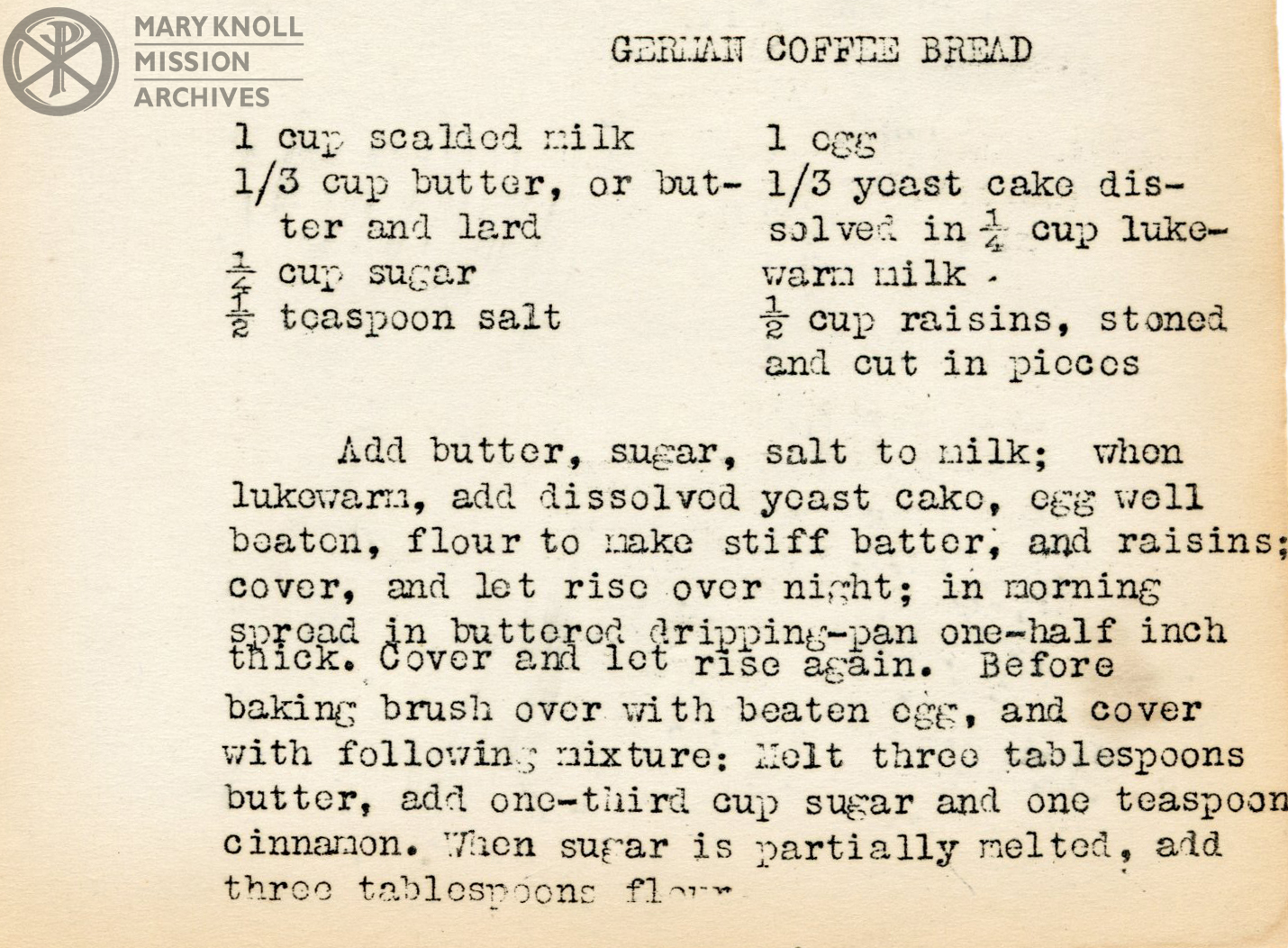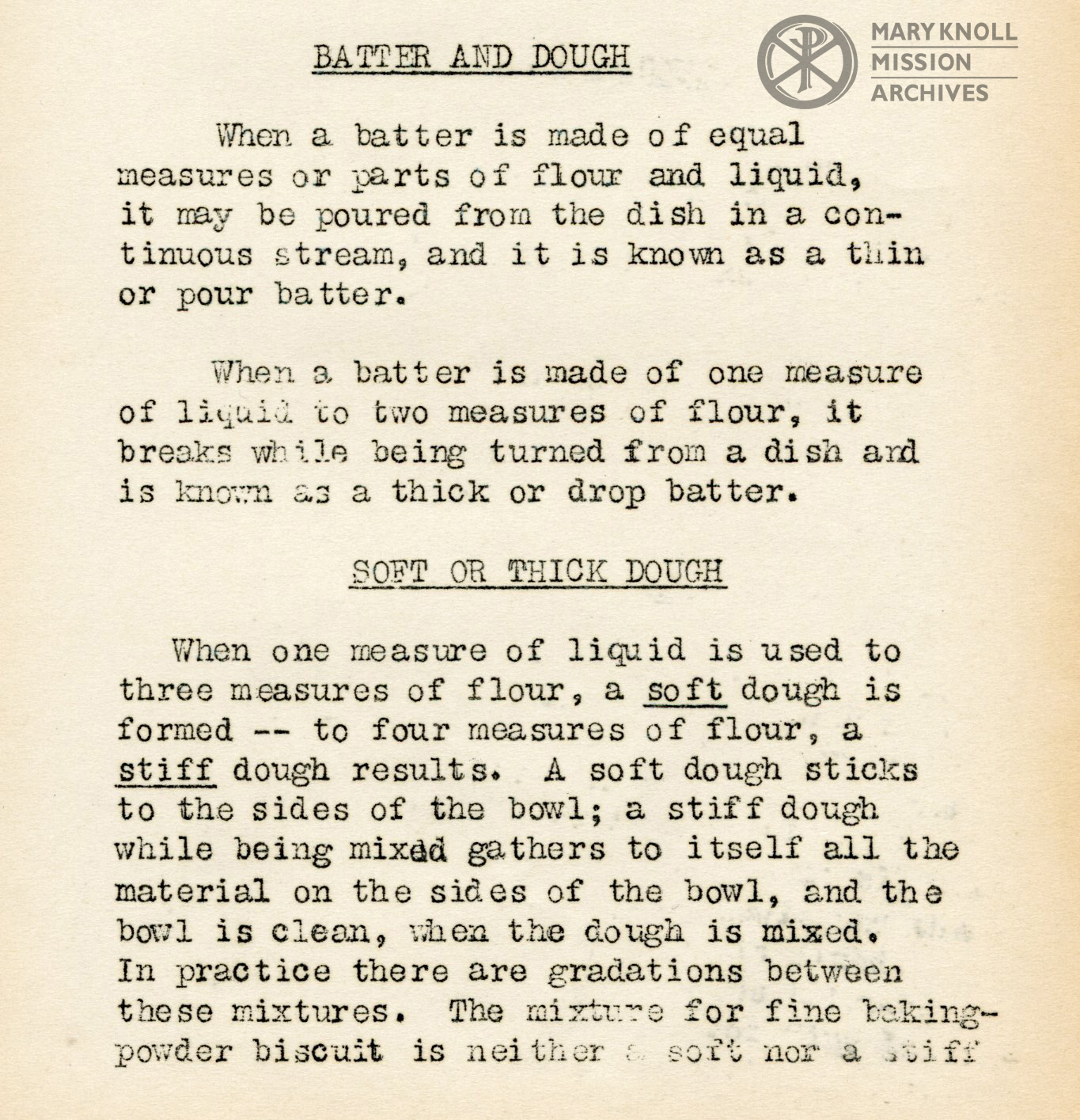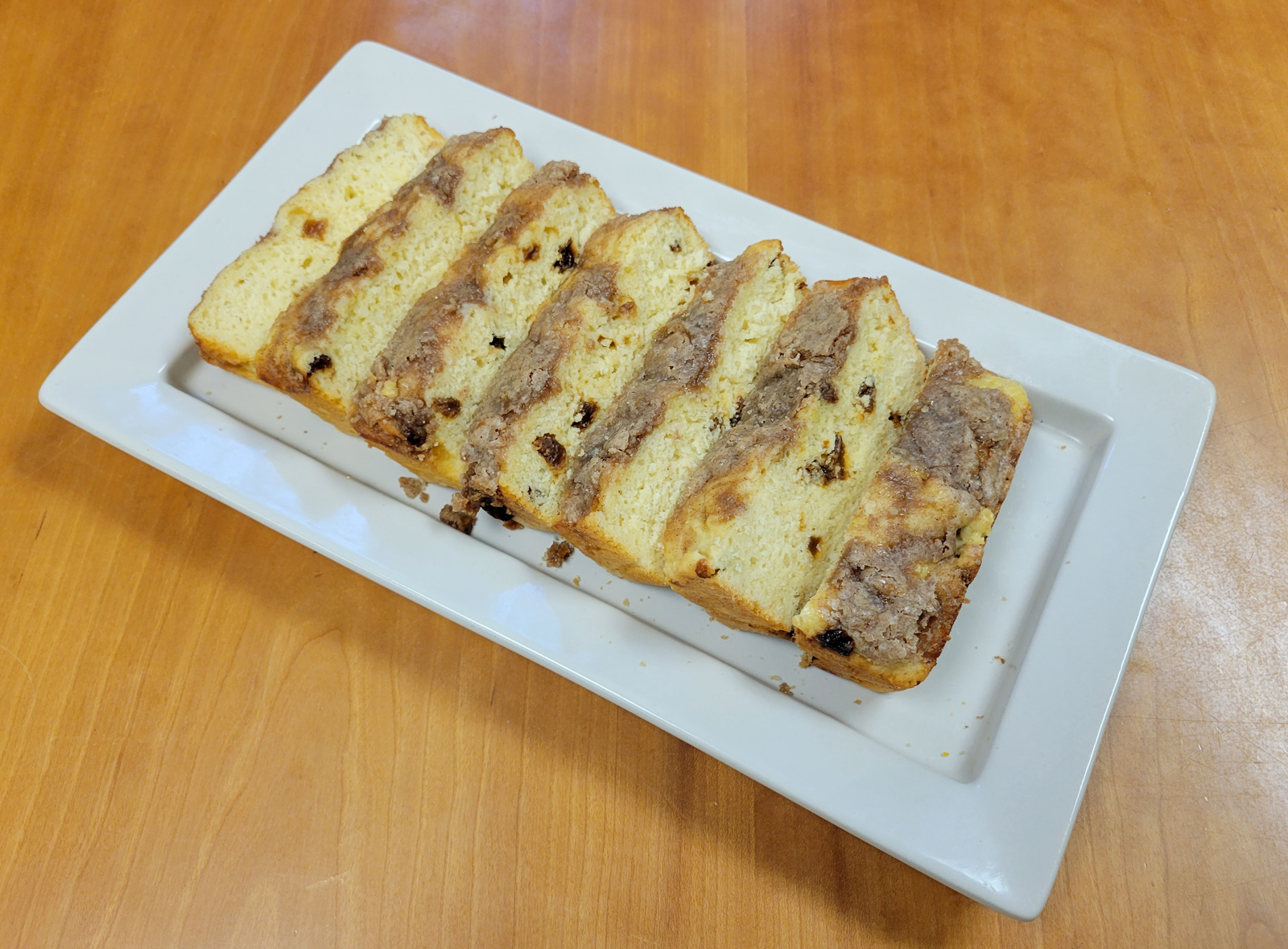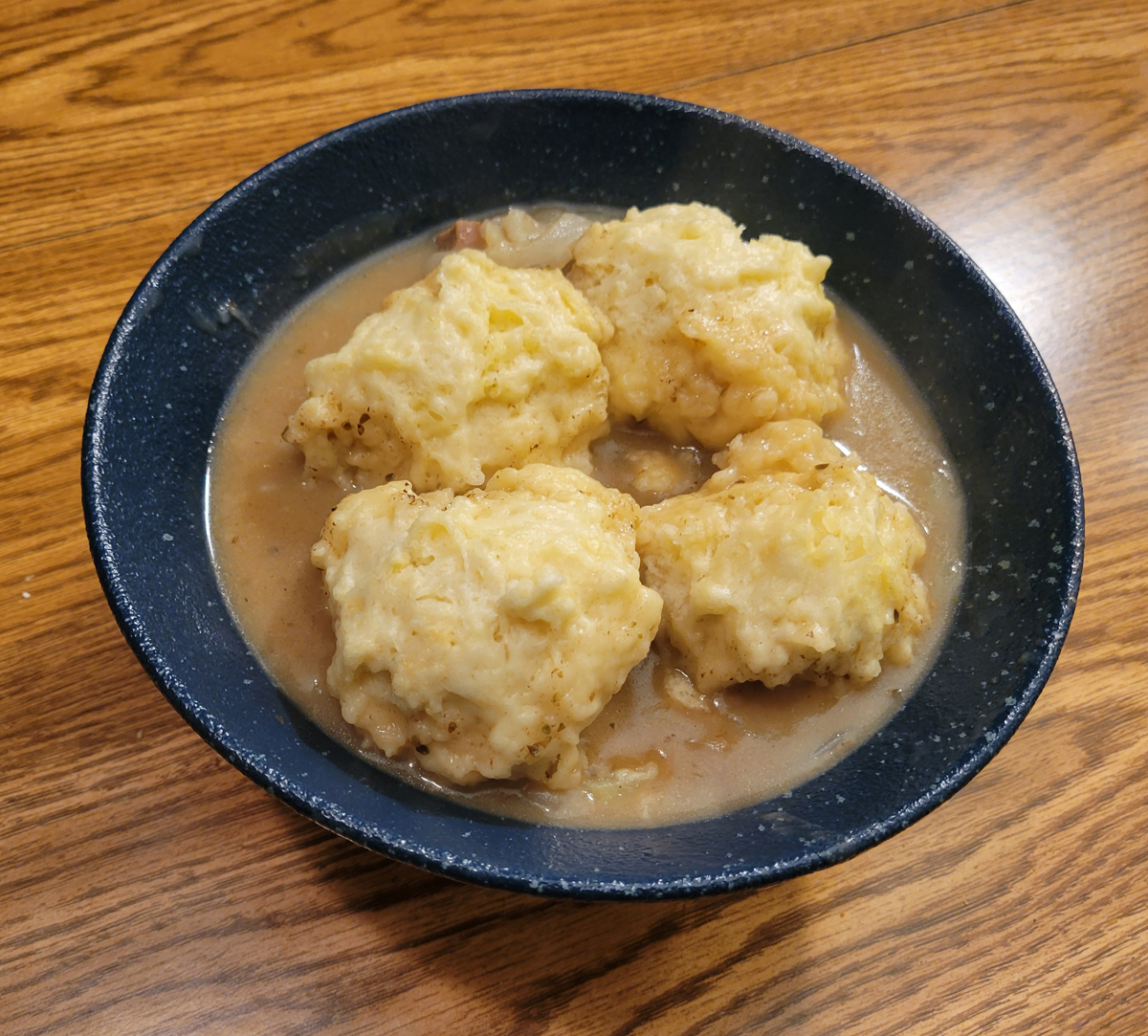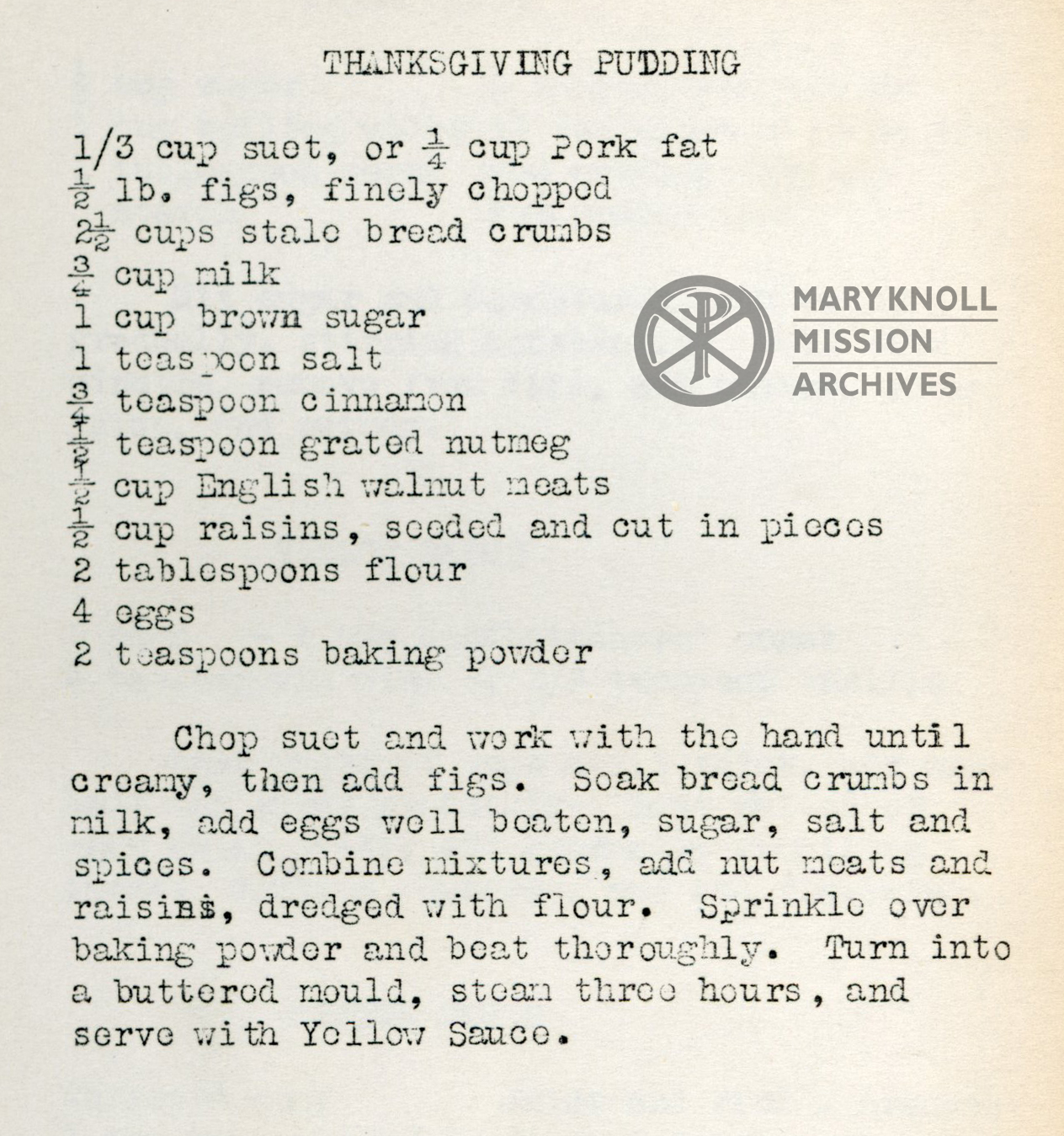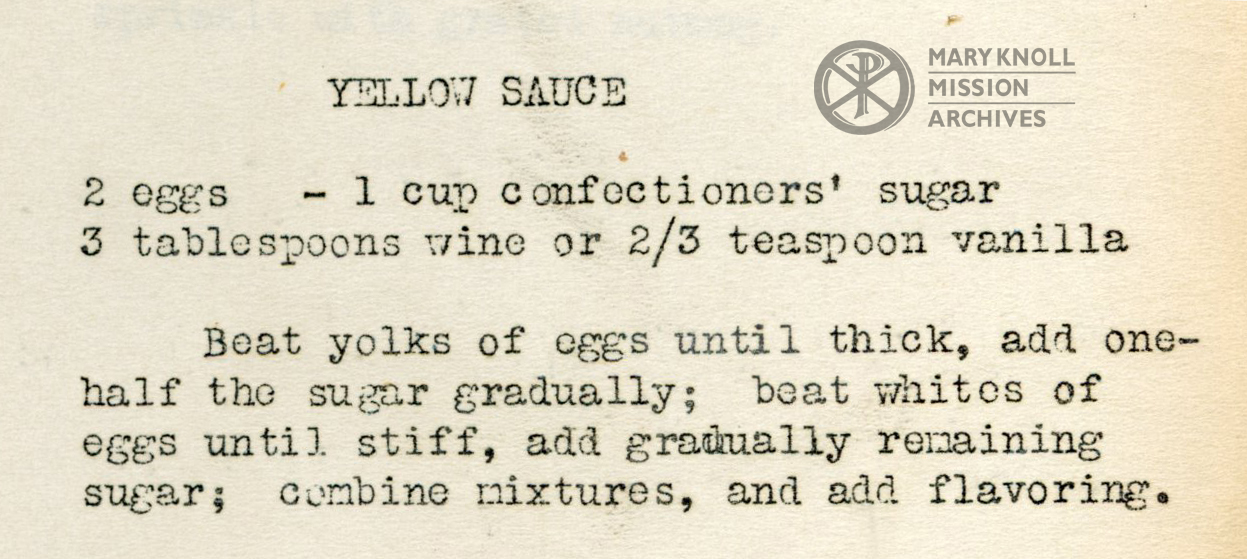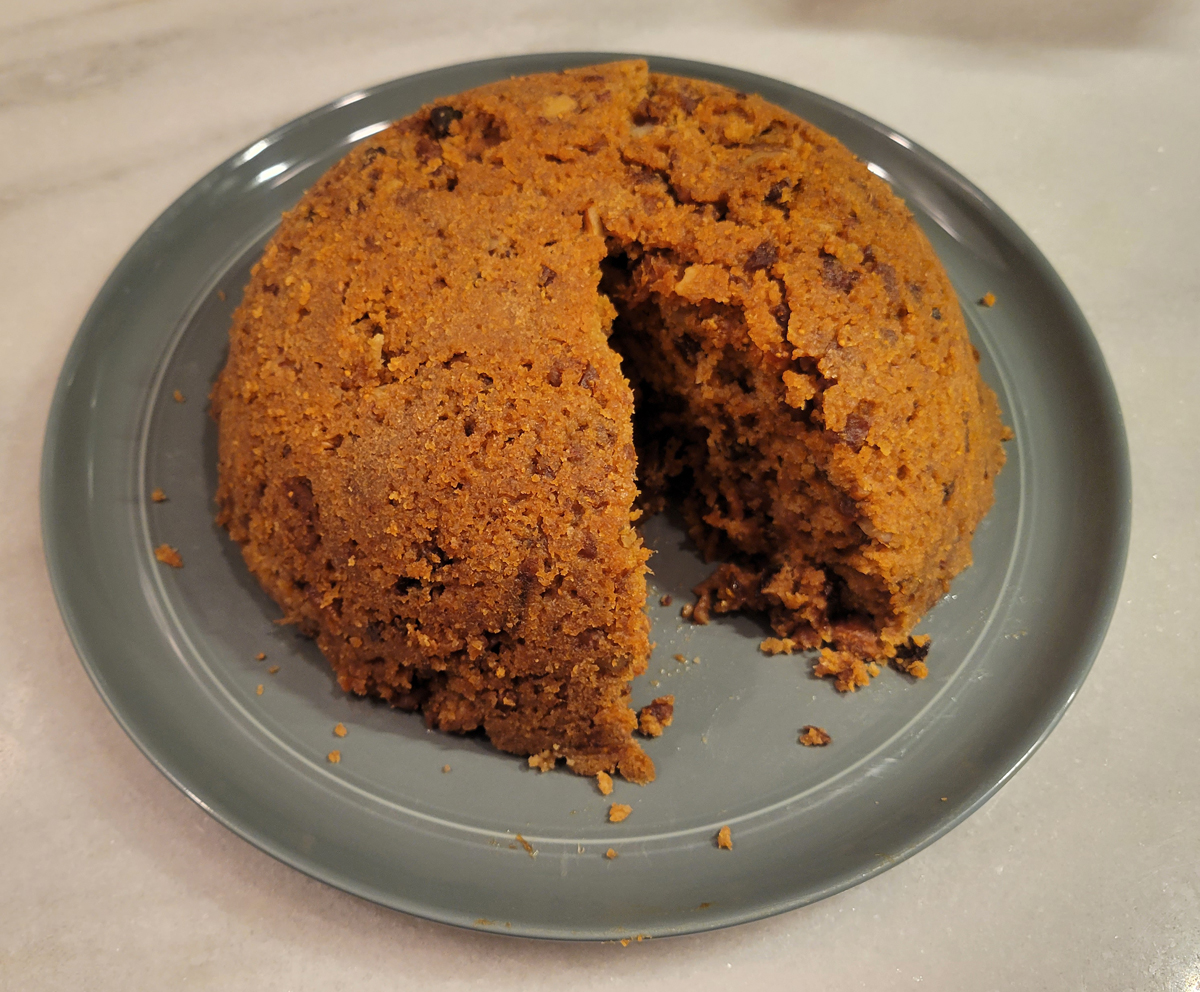Welcome back to another edition of Into the Kitchen with MMJ, where I go back in time to recreate amazing 100 year old recipes! As usual, I will be taking my recipes from the cookbook compiled by Mother Mary Joseph in the 1920s for outgoing Maryknoll Missioners. This time we will be looking at some winter-themed recipes, perfect for the holiday season and snowy nights. I will start by presenting each dish and share what we thought of it. Each section will also include tips for making the recipe at home if you’d like to try it out!
If you would like to check out the other editions of Into the Kitchen with MMJ, click the links below:
The recipes for this edition were chosen with a theme of comfort. Winter tends to get cold, snowy, and dark in New York. Comfort food is key to keeping spirits up until Spring arrives. So grab yourself a nice cup of Cocoa (or Cocoa Egg Nog) and warm yourself by the fire while we dive into more MMJ Recipes!
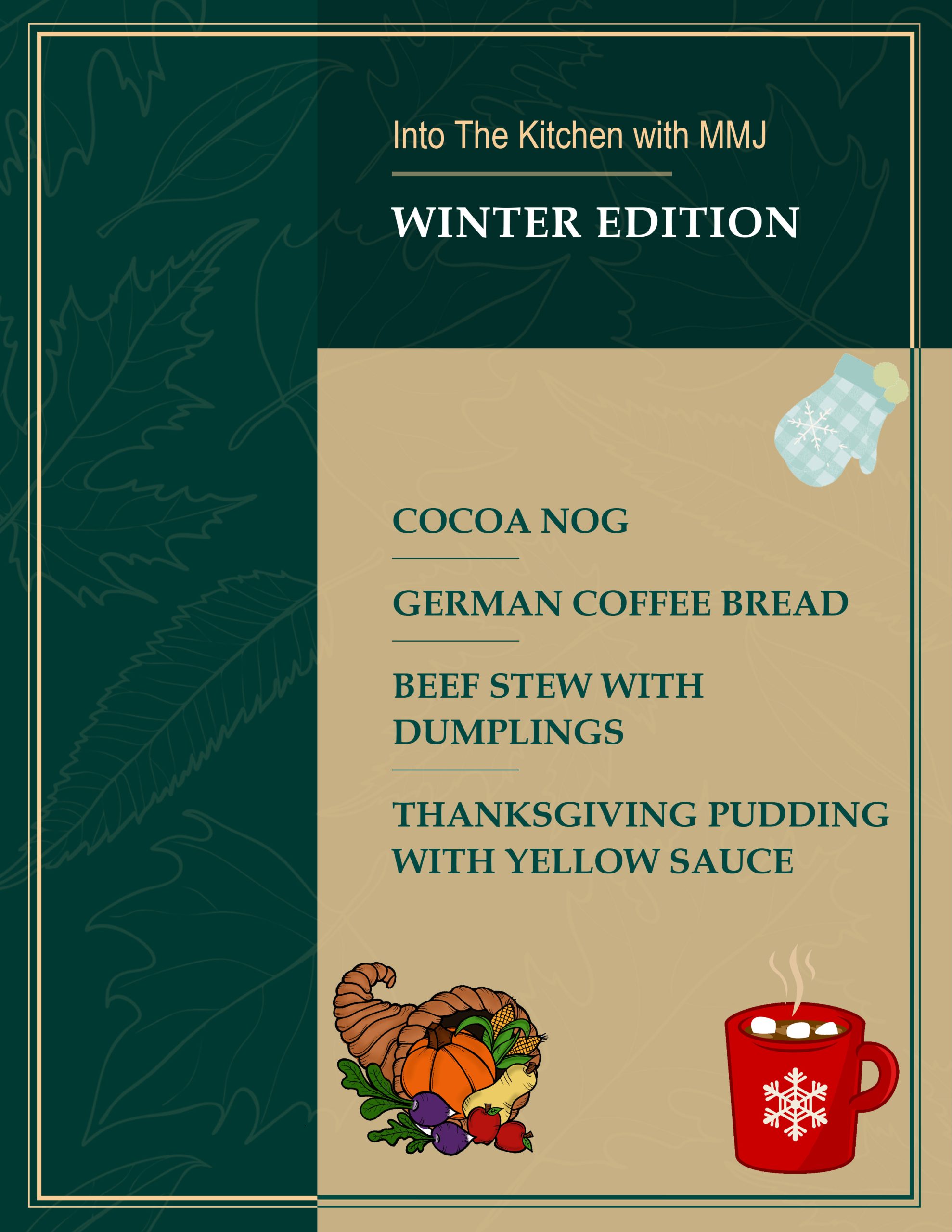
Cocoa Egg Nog
Fun, Festive, and For Everyone.
What Did We Think?
I love a good glass of Egg Nog this time of year, especially the homemade variety. I am also a huge fan of chocolate, so this recipe was a match made in heaven for me! The Cocoa Egg Nog has just enough chocolate to satiate my craving for it, without being overbearing. The egg white adds a fluffy and creamy texture to the drink, making it kind of like a light and airy hot chocolate (minus the hot). I think this recipe is great as an after-dinner drink or simply on its own, enjoyed while sitting next to a crackling fire.
Chef’s Corner
The elephant in the room this time is the uncooked egg white in this recipe. If you are using pasteurized eggs (most are nowadays), you have nothing to worry about food safety wise. It can still gross people out, in which case you can cook it like most modern eggnog recipes.
All you need to do is heat the milk up and mix it into the egg mixture one spoonful at a time. This will temper the eggs so they do not curdle. Then you put the mixture in a sauce pan and cook on medium heat until it reaches 160 F. Make sure you are whisking constantly throughout this whole process, or you will lose the fluffiness of the egg white. With this method, you will have a warm, food safe beverage to enjoy on cold nights!
German Coffee Bread
Doesn’t Actually Contain Coffee!
What Did We Think?
Despite the name, no coffee is required for this recipe, except as a cup on the side. This is one of many recipes (such as coffee cake) that are meant to be served with coffee, rather than containing it. Honestly? I don’t even think it needs it!
When I first picked out this recipe, I was expecting something more akin to a cake or quick bread. However, it really is a proper bread, with the dough itself not being sweet at all. This is balanced out with the raisins in the bread and the streusel on top, which gives the needed sweetness to round out this treat. The streusel is particularly important, as the spice gives a needed depth to a basic recipe.
Chef’s Corner
This is the first recipe where MMJ does not give us enough information to properly make it. I had to do a bunch of research to figure out the process of making German Coffee Bread. In the end I was able to figure it out, and find out an interesting connection (see the next section for more on that). Let’s tackle the gaps one by one.
Flour Ratio: So in the recipe MMJ instructs us to make a “stiff batter”, which was rather confusing at first. I have scanned her section on Batters and Doughs to the left, and you can see that her terminology is mixed. A Batter is either 1:1 or 2:1 of Flour to Liquid, while doughs are 3:1 or 4:1. Stiff would suggest 4:1, batter would suggest 2:1, so which is it? Similar recipes had the ratio at 4:1, so for this recipe you will need 4 cups of flour.
Rise Time: MMJ is more clear on this, but I wanted to add more information about the rise time. An overnight rise is just that, but really you are looking for around 8-10 hours. Your second rise should be about 1 hour, depending on the ambient temperature. Really, what you are looking for each time if for the mixture to double in size, so you don’t even need to fully time it.
Baking Instructions: MMJ gives us absolutely no information on the temperature or time for our bake. She doesn’t even tell us what to look for! So after researching, I found that you will want to bake this recipe at 350 F for roughly 30 minutes, or until the bread has reached an internal temperature of 185 F.
Additional Notes: There are three more things I want to note for this recipe. Firstly if you can’t find yeast-cake, use active dry yeast. It is about one packet (0.25 ounce) per 1/3 yeast cake, so you will need one for this recipe. Next, this recipe will make two loaves about the size of what is shown in the picture, so plan accordingly! Lastly, try different spices for the Streusel. I tried nutmeg on one of my loaves and the flavor profile was more complimentary than the cinnamon.
A Link to Old Cookbooks
I am a historian at heart and these last four posts on MMJ’s cookbook have gotten me into historical cooking. My favorite part of making the German Coffee Bread recipe was the research I had to do. I went down a rabbit hole trying to figure out how much flour to use, how to bake it, and what it was supposed to look like. This all lead me to one of the most famous cookbooks in American Culinary History: The 1896 Boston Cooking School Cookbook, also known as the “Fannie Farmer Cookbook”.
Fannie Farmer was an incredible women who first went to the Boston Cooking School in 1887 to learn the trade. Four years later, she was principal of the school and would go on to make the 1896 cookbook. This cookbook was incredibly important at the time for American home cooks, as it standardized the weights and measures used in the recipes. With this standardization, any aspiring cooking using the book could replicate the results the same as Fannie Farmer. Her recipes and cookbook were a staple in American households, and it is likely your grandmother or great-grandmother had a copy on her shelf.
Now how does this relate to MMJ? Well, firstly I should note that Mother Mary Joseph is a Boston native born in 1882. She would have been 14 when Fannie Farmer came out with her cookbook, published from a famous school in her hometown. It should come as no surprise that MMJ’s recipe is the exact same recipe that appears in Fannie Farmer’s cookbook. MMJ seems to have lifted this recipe straight from the cookbook, and I can’t blame her, it’s a good recipe! I love the little connections we find when studying history.
Beef Stew With Dumplings
Hearty, Simple, and Great for a Cold Night In.
What Did We Think?
If I am being honest, this is probably my least favorite of all the recipes I have tried for this series. That is not to say it is not good, but there is a lack of depth to it all. The recipe is pretty one note and lacking a big punch of flavor. In previous recipes, I have been in awe at how simplicity did not seem to impact quality. This one seems to be the exception.
Is that really fair, though? Let’s remember the context: these recipes are designed to be made by amateur cooks to give missioners the basic nutrition they need. The dish tasting great has always been an added bonus. In addition, when looking at this recipe we can see it is supposed to be a hearty meal (meat and potatoes) and utilize leftovers. While the taste wasn’t great, it was a very filling meal and I would eat it again, though with a few modifications (see below).
Chef’s Corner
I think we can really level this recipe up with some modern conveniences that missioners would not have access to. Firstly, please use stock or broth instead of water. This simple substitution will drastically increase the overall flavor of the stew. I would also suggest adding more seasonings to the stew. The marjoram is a good start, but try adding additional herbs (thyme, rosemary) or flavorings (Worcestershire sauce, savory). You can also add additional vegetables like carrots, celery, and leek, but I like the simplicity of meat, potatoes, and onion. Lastly, I would add a little something extra to the dumplings, such as fresh herbs, garlic, or spices.
Outside of these modifications, I should add a note about cooking time. If you are doing just the stew, you want to simmer the recipe until the potatoes are soft, about 10-15 minutes. If you are adding dumplings, you want to do that right after adding the potatoes and thickening the stew. Make sure there is only enough liquid to barely cover the meat and potatoes, otherwise the dumplings will get soggy. You will need to cook the dumplings for about 15-20 minutes, with the stew at a low boil and a lid on the pot. The potatoes will come out softer, but the dumplings are a good addition to the recipe.
Thanksgiving Pudding
It’s a Triumph, My Dear!
What Did We Think?
References to A Christmas Carol aside, I really did think this recipe was great! I will recognize that English style puddings are not for everyone, and this one in particular doesn’t have a great texture. This pudding is fairly chunky with the nuts, raisins, and figs, but it does hold itself together. The bread-crumbs create a more mealy crumb to the pudding, which can be off-putting at first. Despite all that, the flavor is amazing, especially if you like figs.
I think the yellow sauce (basically a meringue) is also a nice addition. It is creamy , fluffy, and a fairly basic flavor profile. It helps add a bit of balance to a dish that is fairly complex. While this is a classic Christmas dessert, MMJ has it listed under Thanksgiving and I can easily see it fitting right in. It is a very seasonal and festive dish that everyone should try once for their holidays.
Chef’s Corner
First we should talk about suet: what is it and is it necessary? Beef Suet is a specific type of fat that is usually from the kidney section of the cow. It is solid, pure, and has a relatively good flavor for beef fat. The best place to find suet is at a local butcher as most stores do not carry it. Generally, you will have to buy more suet than you need for this recipe, so do you really need it? Technically no, but authentically yes. You can use another fat, such as shortening, and you should get a similar result. However, suet actually has a fairly unique flavor and that is not replaceable. In the end, do whatever works for you and it will turn out fine. This recipe is fairly straightforward, so there is not much else for me to add here.
As for the yellow sauce, we run into the same raw egg issue as with the Cocoa Egg Nog recipe. As long as you use pasteurized eggs you should be fine, but it is still an uncooked meringue. You could try doing a swiss meringue, which uses hot sugar syrup, but that will ultimately create something very different. So if you don’t want to raw eggs, I would suggest using a lemon sauce or something similar to accompany this pudding.
Thank you for joining me on this journey! I have had so much fun making these recipes and sharing them with you all. Please check out the other editions for more fantastic recipes, each themed around a season. That will do it for this year’s editions of Into the Kitchen with MMJ. Keep an eye out next year for more editions of this series, with new recipes and new themes.

